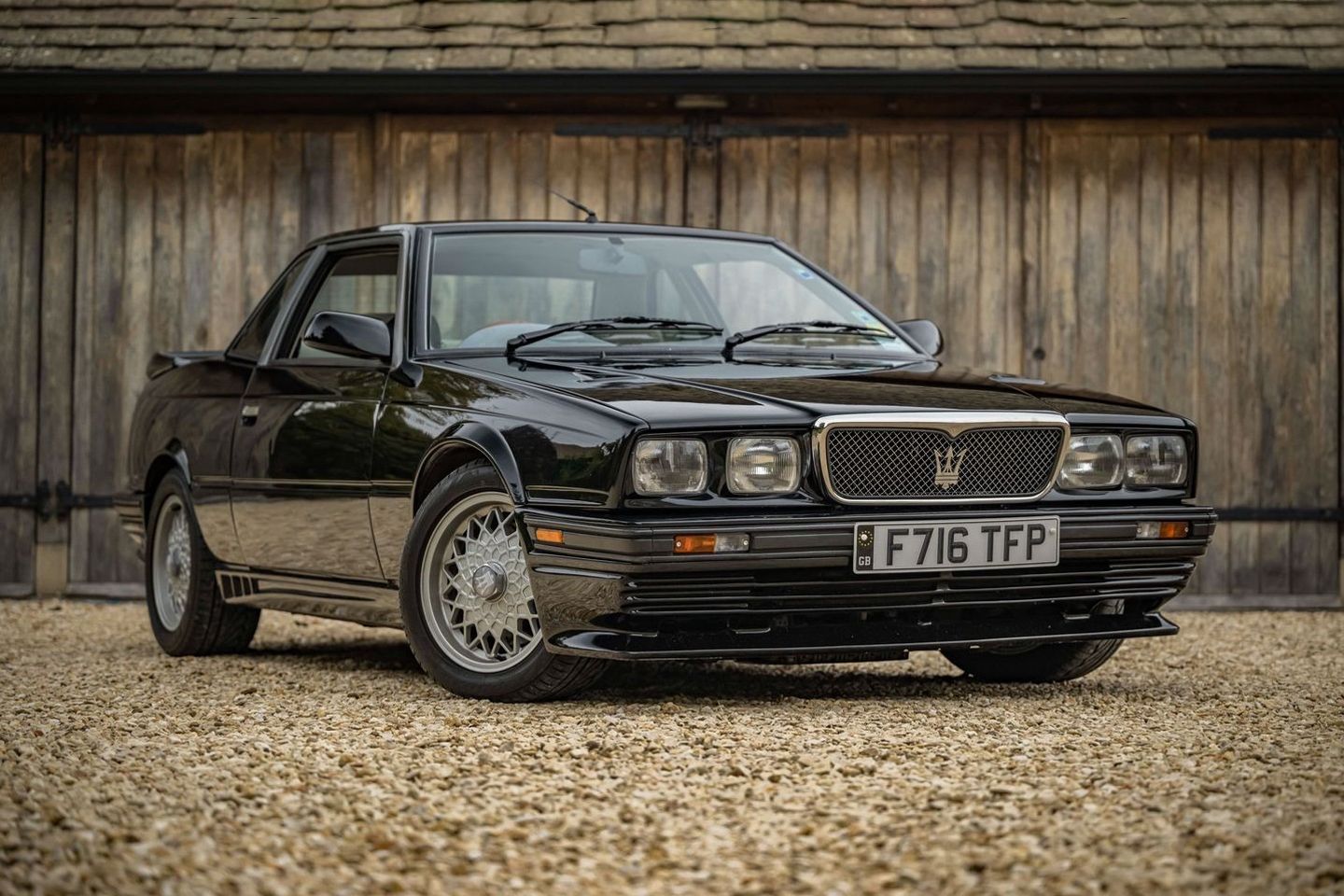You’d be excused for not really knowing about the Maserati Karif. It is, after all, a two-door spun off the BiTurbo architecture that isn’t the Ghibli or the Shamal. And it’s hardly like there were ever very many of those, either. Indeed, the Karif was intended to be a limited edition model from the get-go. It says something of Maserati’s predicament at the end of the ’80s that even that target wasn’t reached. From an original plan of 250 units, it’s believed that just 221 were made…
So that’s why the Karif might be unfamiliar: very few were ever built (35 years ago), it was similar to an existing model, and right-hand drive numbers were absolutely tiny. We’re talking less than 20 per cent of the production run, with single-digit survivors these days. A proper old-school Maserati curio, basically, named after a wind (the Karif blows across the Gulf of Aden in Somalia), with a look like nothing else and a fearsomely powerful turbocharged engine.
This wasn’t just powerful for the period, either. With 285hp from the force-fed 2.8 V6 (remember the BiTurbo association), the Karif would reach 60mph in less than five seconds. That’s impressive for a two-wheel-drive manual car today, so it must have felt extremely brisk in 1990. Top speed was in the region of 160mph. At just four metres long and weighing 1,300kg, the Karif promises to offer up a driving experience like little else. Only very few BiTurbos (cars like the later 222 4v and Racing) could compare with the Karif for V6 power.
The nature of Maseratis of this period meant they attracted a very committed kind of customer. Nobody ever casually embarked on ownership because back in the day you either got this kind of Maserati or you didn’t. That applied even more so later on, when the cars were secondhand and required regular maintenance. This Karif looks to have been loved just as hoped for; the current owner has had it for five years before auctioning, and the owner before that has documented the Maser’s history all the way back to 1993. Exactly the kind of dedication you’d want to see in a classic.
There have been some useful modifications for this Karif during its life as well, including custom Leda dampers with Eibach springs, Wilwood brakes, a stainless steel exhaust and the Zender body kit that looks… well, very of its time. It works nicely with the Fondmetal alloys that were a factory option when new, and mean this is a proper one-of-a-kind. Those that really want to make the most of that twin-turbo power should be encouraged by the Karif’s upgrades; it’ll be a wild ride, but hopefully a fun one as well. The tyres are new this year, and thousands have been spent at McGrath Maserati. There’s no way a 1989 Karif gets to 2025 looking this good without a bit of expert help.
Those who don’t want to drive a Karif fast will surely find plenty to like about the interior of this one. It’s easy to forget just how plush Maseratis of this era were, with wood, leather and suede absolutely everywhere in a Karif. And the gold clock, of course. The small amount of BiTurbos (and similar) made in the first instance, combined with the fact that so few survived, has increased interest in recent years. Because nobody wants the same classic car as everybody else, and the combination of a fierce twin-turbo V6 with a manual gearbox (when so many fast classics are hobbled by autos) is most certainly intriguing. A Karif might take some explaining to the uninitiated, but it promises to be thrilling at the very least. And if it’s rare you’re after, there can’t be anything better.
Navigate leftNavigate right
1 / 5

